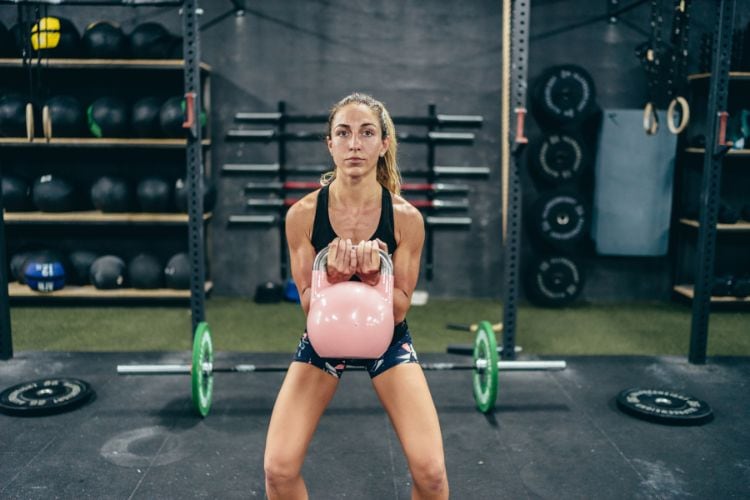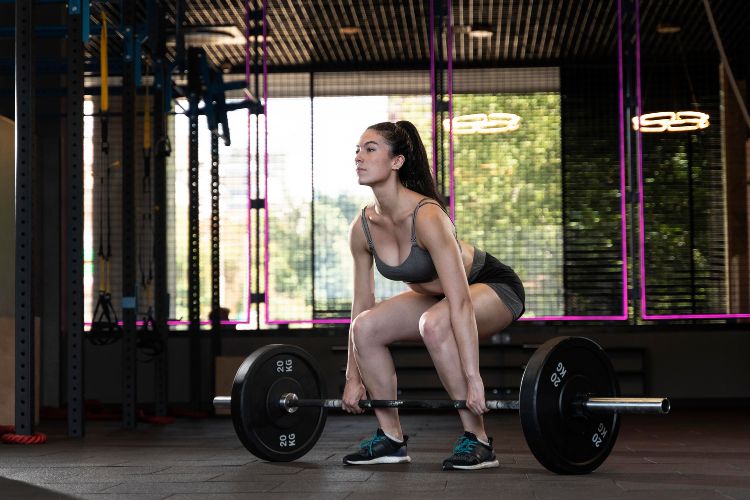Kettlebell Training Program For Strength And Endurance
Kettlebell training has gained popularity due to its versatility, intensity, and full-body benefits. From beginners to advanced fitness enthusiasts, kettlebells offer dynamic workouts that can improve strength, endurance, flexibility, and core stability. This guide covers everything you need to build a comprehensive kettlebell training program.
The Ultimate Kettlebell Training Program For Strength Endurance
Why Kettlebell Training?
Kettlebell training combines elements of strength training, cardio, and functional movement. Here’s why you should consider adding kettlebells to your routine:
Benefits of Kettlebell Training
Kettlebells are unique because they target multiple fitness areas at once, offering these benefits:
- Improved Strength and Power: Kettlebells increase strength in compound movements and develop explosive power.
- Enhanced Cardio Conditioning: High-rep kettlebell exercises elevate the heart rate, improving cardiovascular health.
- Increased Flexibility and Mobility: Movements such as swings, cleans, and snatches improve hip, shoulder, and back mobility.
- Core Stability: Kettlebells engage the core dynamically, promoting better balance and core strength.
Who Can Benefit from Kettlebell Training Program?
Whether you’re new to fitness or an experienced athlete, kettlebells can be tailored to fit various goals and fitness levels. The program structure and weight load are adaptable, making kettlebells an excellent choice for:
- Beginners: Simple movements to improve strength, balance, and endurance.
- Intermediate and Advanced Lifters: Advanced techniques to build power, agility, and full-body endurance.
- Athletes: Enhance functional movements, agility, and overall athletic performance.
Designing Your Kettlebell Training Program
Before you jump into workouts, it’s essential to structure a balanced program that aligns with your fitness level and goals.
Components of a Well-Rounded Program
- Warm-Up: A dynamic warm-up helps prevent injuries and prepares muscles for the workout.
- Strength Training: Include compound movements like squats, presses, and deadlifts.
- Cardio and Endurance: High-rep exercises or HIIT circuits to boost cardiovascular health.
- Flexibility and Mobility: Integrate movements that enhance range of motion and flexibility.
- Cool-Down: Finish with stretches to help muscles recover and prevent stiffness.
Sample Kettlebell Training Program Structure
For an effective full-body kettlebell program, consider a schedule that incorporates a mix of strength, cardio, and mobility:
- Day 1: Full-Body Strength
- Day 2: Cardio and Endurance
- Day 3: Rest or Active Recovery
- Day 4: Upper Body Strength and Core
- Day 5: Lower Body and Power
- Day 6: Mobility and Flexibility
- Day 7: Rest
Choosing the Right Kettlebell Weight
It’s critical to select a kettlebell weight that allows for proper form while challenging you:
- Beginners: 8-12 kg (18-26 lbs) for men; 4-8 kg (9-18 lbs) for women.
- Intermediate: 12-16 kg (26-35 lbs) for men; 8-12 kg (18-26 lbs) for women.
- Advanced: 16-24 kg (35-53 lbs) or more based on individual strength levels.
Essential Kettlebell Exercises
Let’s dive into specific exercises that form the foundation of a successful kettlebell training program.
Kettlebell Swings
Purpose: Build explosive hip power and strengthen glutes, hamstrings, and core.
- Stand with feet shoulder-width apart, holding the kettlebell in both hands.
- Bend your knees slightly, then hinge at your hips to swing the kettlebell between your legs.
- Drive your hips forward to swing the kettlebell to chest height.
Reps: 3 sets of 15-20 reps.
Kettlebell Goblet Squats Training Program
Purpose: Enhance lower body strength and improve core stability.
- Hold the kettlebell close to your chest with both hands.
- Lower into a squat, keeping your chest up and knees aligned.
- Return to the starting position by driving through your heels.
Reps: 3 sets of 12-15 reps.
Kettlebell Deadlifts
Purpose: Strengthen posterior chain muscles, including glutes, hamstrings, and lower back.
- Stand with feet hip-width apart, holding the kettlebell with both hands.
- Push your hips back, keeping a slight bend in your knees.
- Lower the kettlebell to the ground, then return to standing by engaging your glutes and hamstrings.
Reps: 3 sets of 10-12 reps.
Kettlebell Lunges
Purpose: Build leg strength, stability, and improve balance.
- Hold a kettlebell in one hand at shoulder height.
- Step forward into a lunge position, lowering your back knee toward the floor.
- Push through your front foot to return to standing.
Reps: 3 sets of 10 reps per leg.
Kettlebell Overhead Press Training Program
Purpose: Develop shoulder strength and stability.
- Hold the kettlebell at shoulder height.
- Press the kettlebell overhead, keeping your core engaged.
- Lower the kettlebell back to shoulder height.
Reps: 3 sets of 8-10 reps.
Kettlebell Snatch
Purpose: Improve power and coordination.
- Begin with the kettlebell between your feet.
- Swing the kettlebell between your legs, then use an explosive movement to bring it overhead in one smooth motion.
- Control the kettlebell back down.
Reps: 3 sets of 6-8 reps per side.
Sample Weekly Kettlebell Training Program Workout Plan
Here’s a sample kettlebell program you can follow to build full-body strength and endurance.
Day 1: Full-Body Strength
- Kettlebell Swings – 3 x 15-20 reps
- Goblet Squats – 3 x 12-15 reps
- Overhead Press – 3 x 8-10 reps
- Deadlifts – 3 x 10-12 reps
2: Cardio and Endurance
- 15-minute AMRAP (as many rounds as possible):
- Kettlebell Swings – 20 reps
- Lunges – 10 reps per leg
- Snatches – 8 reps per side
4: Upper Body and Core
- Push Press – 3 x 10 reps
- Bent-Over Rows – 3 x 12 reps per side
- Russian Twists – 3 x 20 reps
- Plank with Kettlebell Drag – 3 x 30 seconds
5: Lower Body and Power
- Single-Leg Deadlift – 3 x 8-10 reps per leg
- Goblet Squats – 3 x 15 reps
- Lunges – 3 x 10 reps per leg
- Kettlebell Swings – 3 x 20 reps
6: Mobility and Flexibility
- Turkish Get-Ups – 3 x 5 reps per side
- Kettlebell Windmills – 3 x 8 reps per side
- Deep Lunges – 3 x 12 reps per side
Tips for a Successful Kettlebell Training Program
Good form is critical in kettlebell training to prevent injuries and ensure effectiveness. Practicing exercises with lighter weights first will help you learn proper techniques.
Prioritize Rest and Recovery
Rest days are crucial to allow muscles to repair and strengthen. You can incorporate light stretches, foam rolling, or yoga to stay active on rest days.
Adjust the Weight as You Progress
As you grow stronger, gradually increase the kettlebell weight. This incremental approach ensures consistent progress without risking injury.
Combine Kettlebells with Other Training
For even better results, consider mixing kettlebell training with other forms of exercise, such as bodyweight exercises, cardio, or resistance bands.
Tracking Your Kettlebell Training Program Progress
Set Clear Goals
Whether your aim is muscle gain, fat loss, or endurance, setting clear goals will help track your progress and keep you motivated.
Keep a Training Log
Recording reps, sets, and weights used in each session will provide a concrete reference for your progress.
Monitor Your Heart Rate
For those focused on cardio improvements, monitoring your heart rate during workouts can ensure you’re working at the right intensity.
A kettlebell training program is an effective way to achieve a well-rounded fitness level. It’s a versatile workout that builds strength, endurance, and mobility while engaging your core. Start with the basics, focus on form, and gradually increase the intensity to see incredible fitness gains. Whether you’re at home or the gym, kettlebells provide the perfect tool to stay fit, strong, and agile.
Most Recommended



